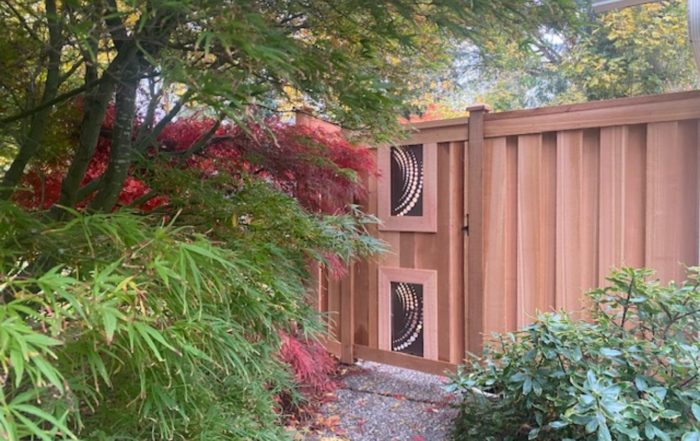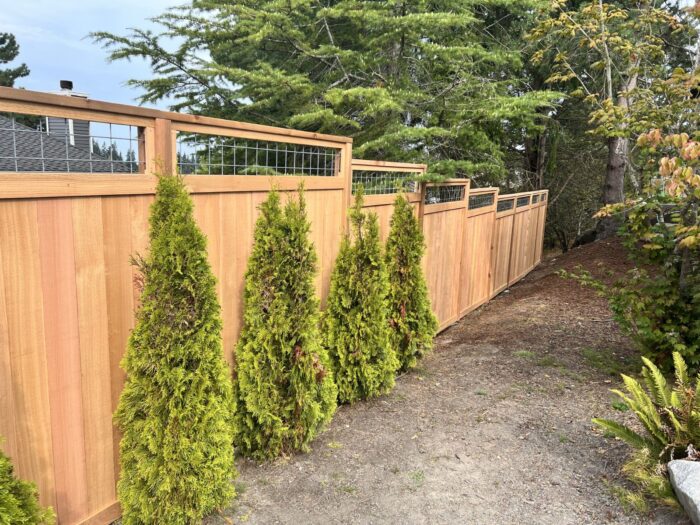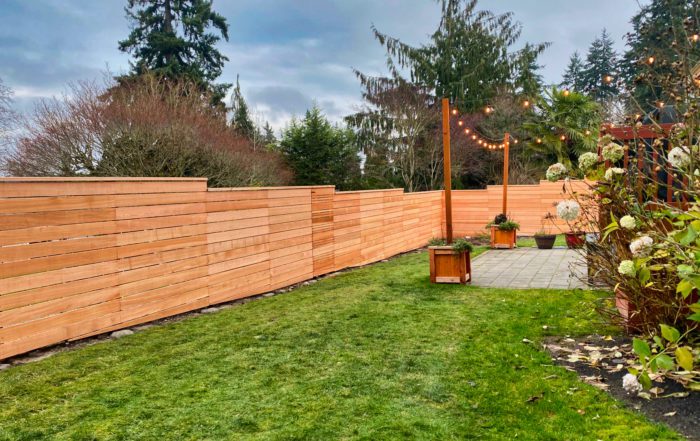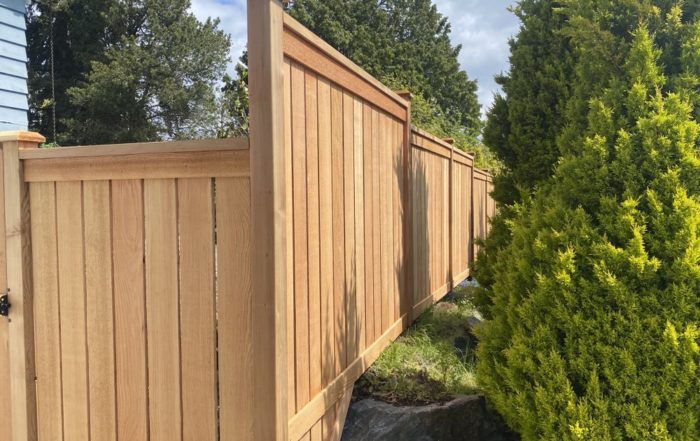Choosing the right backyard fence goes beyond privacy—it’s about style, security, and boosting curb appeal. This guide walks you through the best materials, smart design tips, and HOA-friendly options that practically sell themselves.
Need a backyard fence but not sure where to start? This guide helps you choose the right fence for privacy, security, and style. Explore the best materials, design ideas, and installation tips that match your goals and climate—without the overwhelm.
Key Takeaways
- Define the main purpose of your fence—privacy, safety, or curb appeal—to guide your design and material choices.
- Choose fencing materials based on climate durability and maintenance levels—from wood and vinyl to composite and aluminum.
- Use strategic placement and decorative elements to maximize privacy and boost your outdoor space’s visual appeal.
Understanding the Purpose of Your Backyard Fence
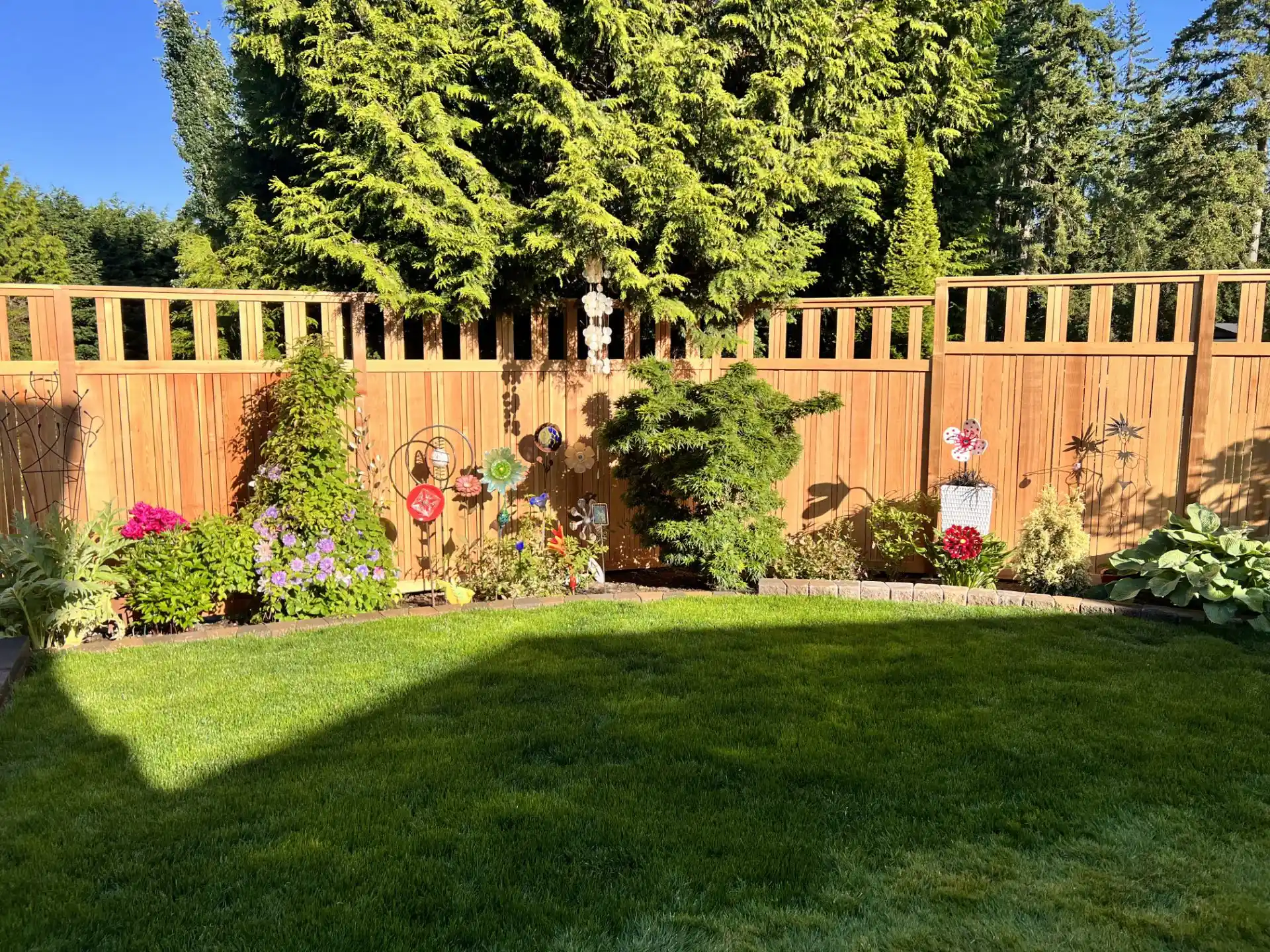
Choosing the perfect backyard fence starts with one essential question: What’s the main purpose?
Your fence might need to block street noise, keep pets safe, add security, or simply complete the look of your landscape. Some homeowners want privacy from neighbors; others want an open view while still defining property lines.
Identifying your priorities—privacy, security, aesthetics, or all three—helps you make the right decisions from the start. For example, tall wood or vinyl fences work well for privacy. If security is your goal, consider sturdy metal options like aluminum or steel.
Choosing the Right Fencing Materials
Your climate and how much maintenance you’re willing to commit to should heavily influence your choice in fencing material.
Wood offers warmth and character, but it can rot in damp climates or crack in dry ones. Vinyl is low-maintenance and weather-resistant, but may become brittle in extreme cold.
Aluminum stands up well in windy regions and resists rust if coated properly. Composite fencing, made from a mix of recycled wood fibers and plastic, blends the look of wood with the durability of synthetic materials.
Tip: In especially wet or humid areas, consider pressure-treated wood or composite to avoid moisture-related issues.
Exploring Fence Styles to Match Your Landscape
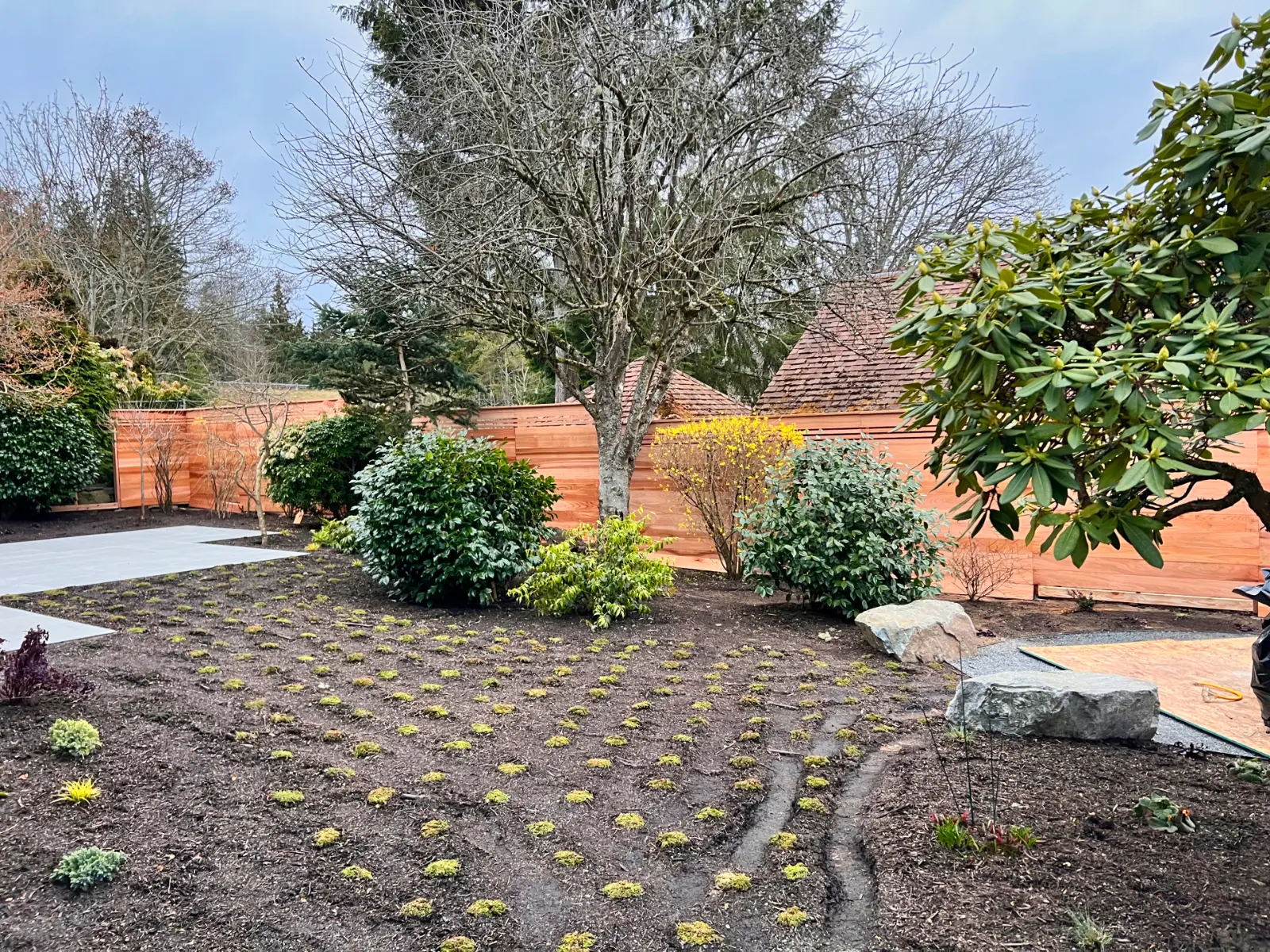
The right fence style complements your home’s architecture and outdoor layout. A thoughtfully chosen design can elevate your landscape while serving a functional purpose.
- Picket fences offer a classic suburban look—perfect for traditional or cottage-style homes.
- Lattice panels work beautifully in gardens and support climbing plants.
- Solid panel fences provide privacy and clean lines, great for modern aesthetics.
- Reclaimed wood adds character and sustainability to your space.
Matching style to function ensures your fence adds curb appeal without sacrificing its purpose.
Determining the Ideal Fence Height
Fence height matters for both privacy and practicality—but it’s not entirely up to you.
First, check local zoning laws and HOA regulations to avoid setbacks or costly rework. Permits may be required for fences above a certain height.
Privacy fences usually stand 6 feet tall, offering a solid visual barrier. If you’re trying to contain larger dogs or need extra security, an 8-foot fence may be more appropriate.
Always confirm your property lines before installation to avoid disputes—and give neighbors a heads-up if the fence will affect shared boundaries.
Ensuring Durability and Weather Resistance
A fence should last through all seasons, not just look good on install day.
Vinyl and composite materials resist rot, moisture, and insect damage. Aluminum resists rust, especially with a protective coating—ideal for coastal or rainy areas.
Even wood fencing can last when properly sealed. Apply water-repellent sealants regularly, and check for signs of wear after heavy storms.
Maintenance Tip: Scrub rust off metal fences early and apply a rust-resistant primer. Regular upkeep prevents small issues from becoming expensive repairs.
Comparing Wood, Vinyl, and Metal Fencing
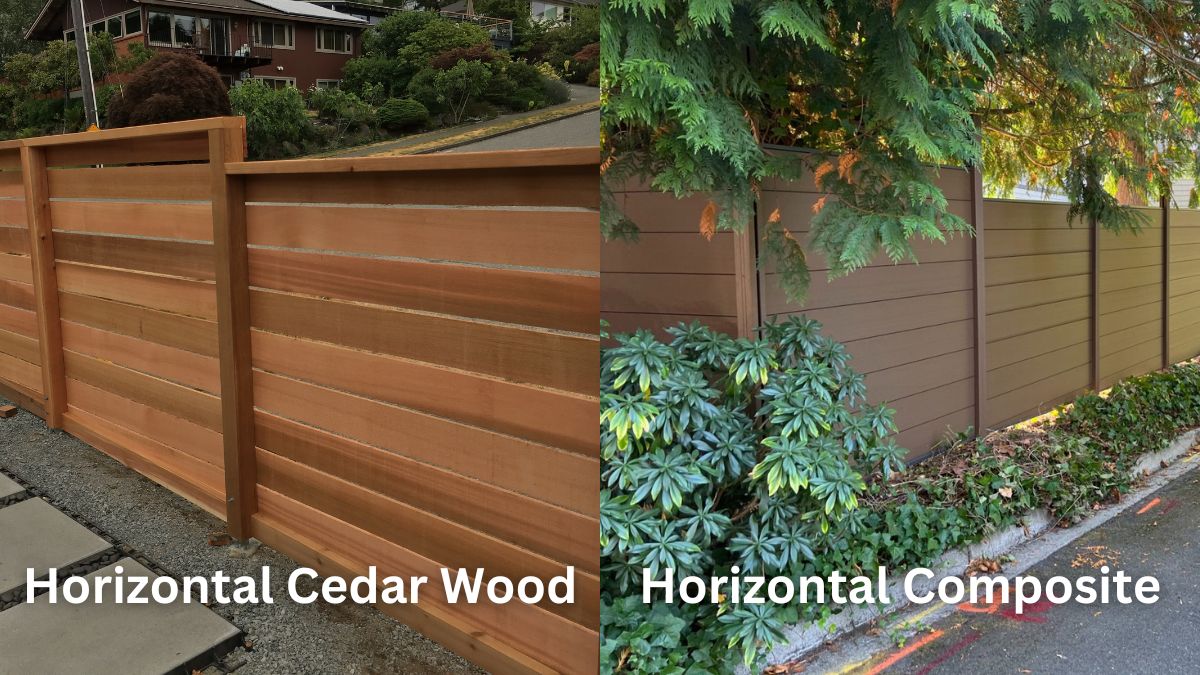
Your choice of material directly affects the overall cost (based on 2025 national averages, not including labor).
-
Standard wood fences cost $15–$35 per linear foot, depending on the type. Pine is cheaper, while cedar and redwood cost more. Wood looks great but needs regular maintenance.
-
Western Red Cedar is a premium wood option, ranging from $8.50–$16.50 per linear foot, with higher-grade boards costing much more.
-
Vinyl fencing ranges from $36–$65 per linear foot. It’s low-maintenance and long-lasting, but has a higher upfront cost.
-
Aluminum fencing averages $25–$75 per linear foot. It’s durable, rust-resistant, and requires very little upkeep.
Each material has its trade-offs. Think about your budget, climate, and how much upkeep you’re willing to take on when choosing the best option for your space.
Expert Tip: Don’t just compare costs—factor in how much time and money you’ll spend maintaining your fence over 10+ years.
Addressing Maintenance Needs
Routine care extends your fence’s lifespan.
- Wood fences need occasional cleaning with mild soap and water, plus fresh sealant or stain every 2–3 years.
- Vinyl fences require minimal care—just rinse with water and a mild cleanser to remove buildup.
- Metal fences may need rust-resistant touch-ups in high-humidity or coastal areas.
Set a seasonal maintenance routine to catch small issues before they become costly repairs.
Quick Tip: Schedule routine inspections each spring and fall to catch small problems early.
Enhancing Security with Gates and Locks
Fencing defines property boundaries and enhances security by deterring unauthorized entry.
- Keyless locks offer convenience and security by reducing the risk of stolen or lost keys.
- Keyed locks remain a reliable, widely used option.
- Long-throw locks offer deeper bolt engagement—ideal for thicker or heavier gates.
Choose gate hardware made from rust-resistant materials like marine-grade stainless steel to withstand outdoor conditions. Security upgrades are especially important if you’re enclosing a pool, pets, or secluded areas.
Adding Decorative Elements to Your Fence
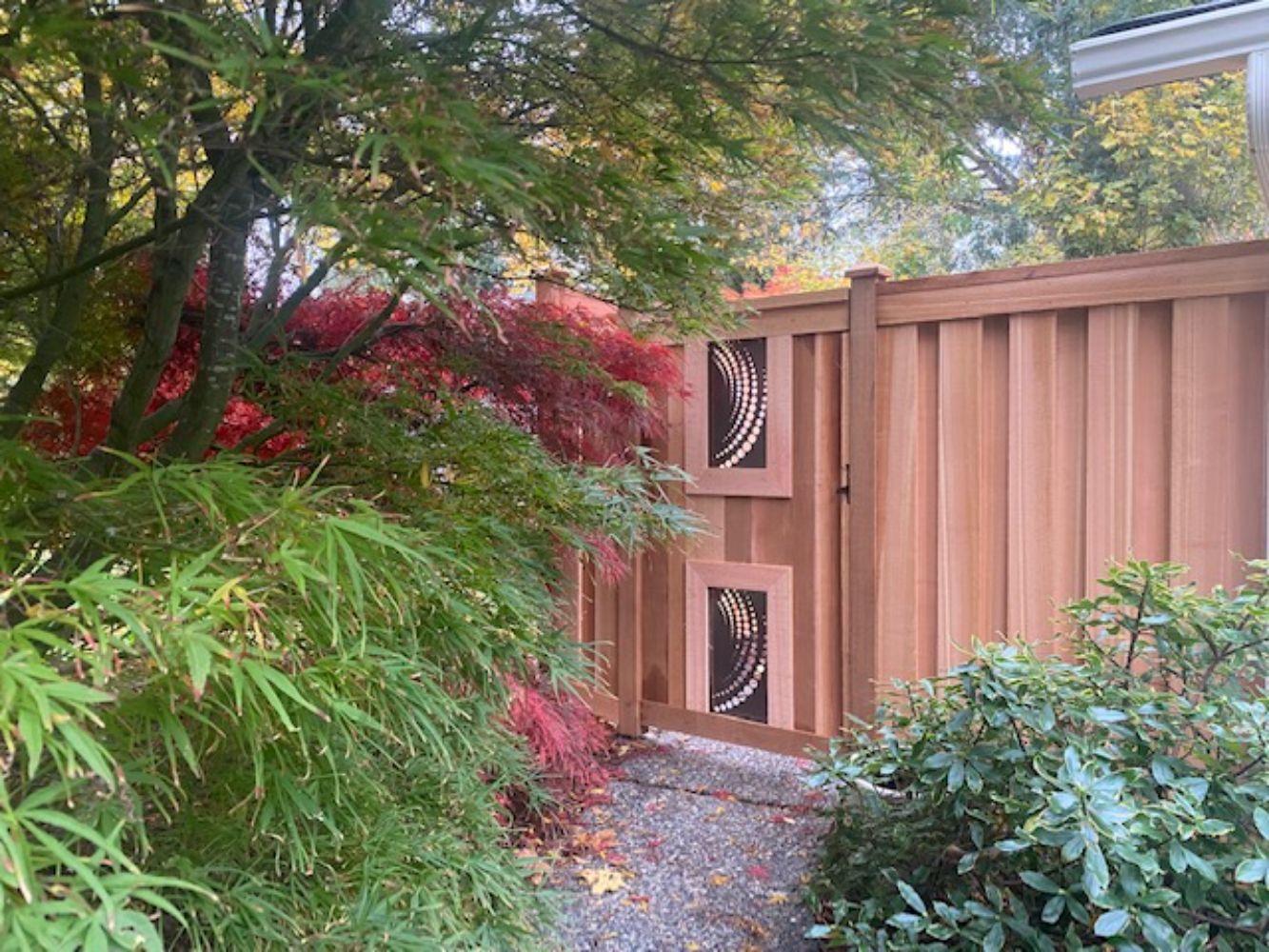
Board-on-board privacy fence with decorative metal inlays
Your fence doesn’t have to be boring. Small design touches can turn a functional boundary into a highlight of your yard.
- Decorative planters add color and warmth to blank fence panels.
- String lights or solar sconces illuminate pathways and extend outdoor enjoyment into the evening.
- Trellises and arbors enhance entrances and invite climbing plants for added softness.
- Lattice toppers offer privacy without sacrificing style.
These additions make your fence feel intentional—not just structural.
Expert Tip: Combine vertical gardens with modern slatted fencing to create a multi-purpose space that feels natural, private, and design-forward. It’s especially useful in small backyards where space is limited but style still matters.
Creating Pet-Friendly Fences

If your fence is keeping pets safe, you’ll want something built for durability and containment.
Aluminum fences are strong and chew-resistant, while vinyl fences offer no gaps for small dogs to squeeze through and block sound better.
Avoid fences with wide slats or footholds. For extra safety, consider dig guards or inward-angled toppers.
Note: Electric fencing can be effective but should only be used with proper training and consideration of your pet’s temperament.
Fence Features by Owner Type
| Owner Type | Fence Must-Have Features |
|---|---|
| Pet Owners | No gaps, sound resistance, dig-proof base |
| Families with Kids | Locking gates, 6+ ft height, non-toxic materials |
| Urban Homeowners | Privacy panels, noise reduction, space-saving design |
| Eco-Conscious | Sustainable materials (bamboo, composite), local sourcing |
Installing Your Fence: DIY vs. Professional Help
DIY fence installation can save money, but it takes time, effort, and the right tools. If you’re handy and enjoy a project, it can be rewarding.
Hiring a professional ensures better durability and fewer installation errors. It’s also faster and easier—especially for tricky landscapes or large yards.
Always get quotes from multiple fencing contractors, and compare both labor and materials to stay within budget.
Budgeting for Your Backyard Fence Project
Budgeting is a crucial step in planning any fencing project. Start by deciding what matters most—privacy, security, or style—and prioritize your spending accordingly.
Material costs vary widely. Wood is generally the most budget-friendly upfront, but it may require more maintenance long term. Vinyl and composite have higher initial costs but offer durability and less upkeep.
Factor in labor, permits, and any necessary prep work like removing old fencing or leveling the ground. Be sure to include a buffer for unexpected expenses, and don’t hesitate to ask about seasonal discounts from contractors.
Quick Tip: Watch for seasonal discounts or promos from local fence companies—they can make a significant dent in your total cost.
Navigating Local Regulations and Permissions
Skipping the permitting step can cost you big.
Check with your municipality and HOA for local fence codes—especially height limits, setbacks, and approved materials. Fences over a certain height may require special approval.
Map out property lines to prevent neighbor disputes. Consider hiring a surveyor if boundaries are unclear.
Pro Tip: Include permit fees and inspection costs in your budget to avoid surprise expenses later.
Maximizing Privacy with Strategic Placement

You don’t always need a tall fence to feel private.
Strategic fence placement—paired with landscaping—can offer the same effect without overwhelming your space.
- Install taller panels near hot spots (patios, windows)
- Use trellises or plantings to block views naturally
- Layer fences and shrubs for added sound dampening
Combining fencing with greenery creates a space that feels enclosed without feeling closed off.
Choosing Eco-Friendly Fencing Options
Looking for sustainable fencing ideas? There are more options than ever.
- Bamboo grows fast and doesn’t require chemicals
- Wattle fences, made from woven branches, are biodegradable and visually unique
- Stone or gabion walls are ultra-durable and sourced from local materials
- Living fences, made from dense shrubs or hedges, double as privacy screens and wildlife habitats
Eco-friendly doesn’t mean boring—and it can even increase the value of your landscape design.
Summary
Choosing the right backyard fence starts with purpose. Whether you’re after privacy, security, or style, your decision will shape not just your landscape—but how you live in it.
Prioritize function, choose the right material for your climate, and invest in features that align with your lifestyle and maintenance preferences. A fence isn’t just a barrier—it’s an extension of your home.
When thoughtfully chosen and properly installed, a backyard fence adds beauty, comfort, and peace of mind to your outdoor living space.
Frequently Asked Questions
What are the most durable fencing materials for extreme weather conditions?
Vinyl and aluminum stand out. Vinyl resists rot and insects, while aluminum handles wind and rust—perfect for challenging climates.
How high should a privacy fence be?
Typically 6 feet tall, but you can go up to 8 feet if your area allows. Always check local zoning laws.
What are the maintenance requirements for wood fences?
Clean regularly, re-stain every 2–3 years, and inspect for damage seasonally.
Is it better to install a fence myself or hire a professional?
DIY can save money, but professionals ensure code compliance, stability, and better longevity.
What eco-friendly fencing options are available?
Bamboo, wattle, stone, and living fences all offer sustainable, low-impact alternatives to traditional materials.
What is the cheapest wood for fencing?
Pine is the cheapest wood for fencing, costing between $10 and $35 per linear foot for materials. This price does not include installation costs, which vary based on labor and site conditions.
Why do wood fence prices vary?
Wood fence prices vary due to wood type, wood quality, fence height, labor rates, installation difficulty, and material costs. Premium woods like Western Red Cedar and Redwood are more expensive, and complex installs increase overall pricing. Most listed costs do not include installation unless stated.
Is cedar fencing a good investment?
Yes, cedar is a smart investment for fencing because it’s naturally resistant to rot and insects. Cedar fences offer both durability and aesthetic appeal.

